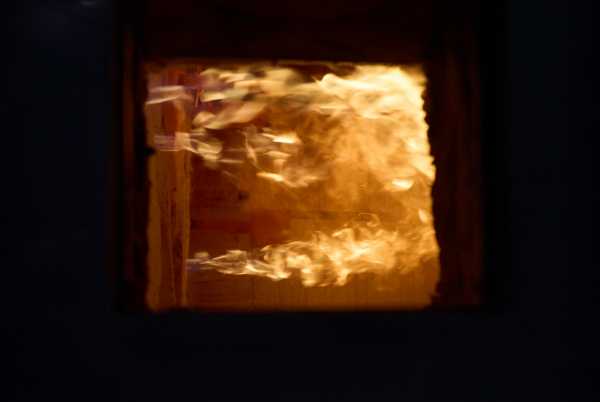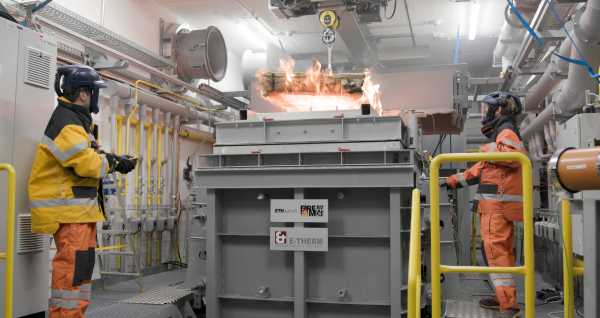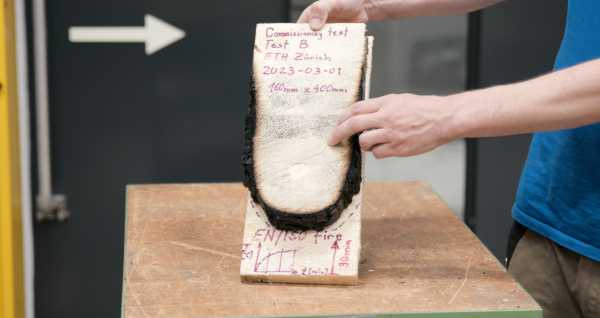Precisely simulating fire scenarios
Including building renovation measures, the oven developed especially for fire simulations costs around CHF 2.5 million, looks robust, and is housed in the heating building of the Hönggerberg campus. It comprises a metal cube reinforced with steel girders with a combustion chamber that is one metre high, one metre wide, and almost 1.7 metres long. The fire simulator is controlled by ten gas burners attached in equal halves to the two long sides. They can heat the oven up to over 1,400 degrees Celsius. The tests are recorded with several cameras outside the combustion chamber, and the composition of the combustion gases can also be analysed.
“We can program the oven’s temperature precisely to three degrees and do the same with the oxygen in the furnace,” explains Andrea Frangi proudly. The timber components and other common construction materials can also be encumbered with up to 50 tonnes during the test. The Professor for Timber Structures initiated the procurement of the fire simulator and was involved in determining its specifications. “The furnace allows us to simulate various fire scenarios and study their impact on the timber structures.”
Timber is a sustainable and safe construction material
Timber construction is booming in Switzerland, and the buildings are growing. Timber high-rise buildings ranging from 75 to 108 metres in height are currently planned or already under construction in Regensdorf, Zug, Winterthur, and Zurich. The fact that this is at all possible is also due to research work spanning decades, such as that carried out by Frangi’s group with the fire simulator. New construction products and technologies for connecting timber components also facilitate increasingly larger and unusual constructions.






Comments
No comments yet